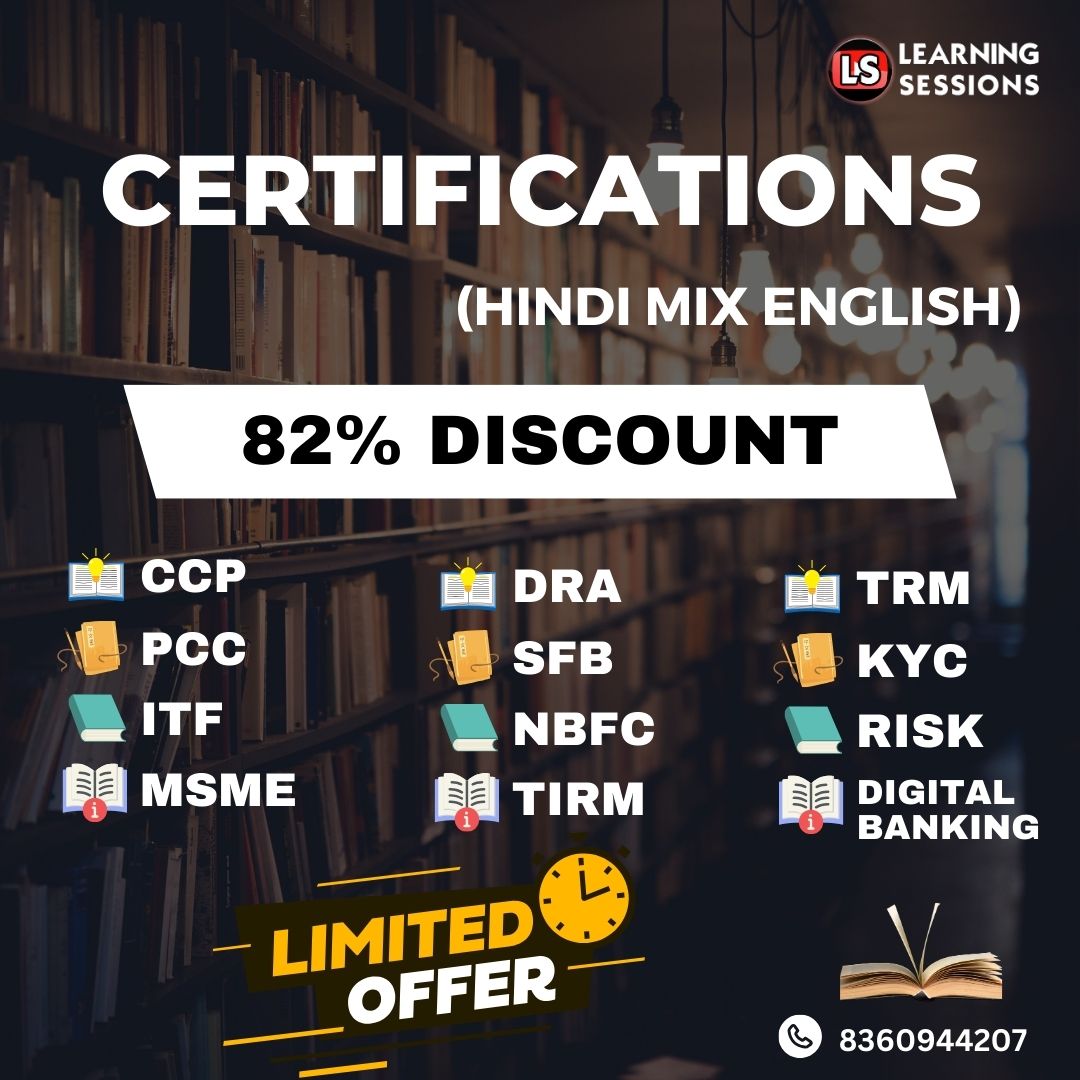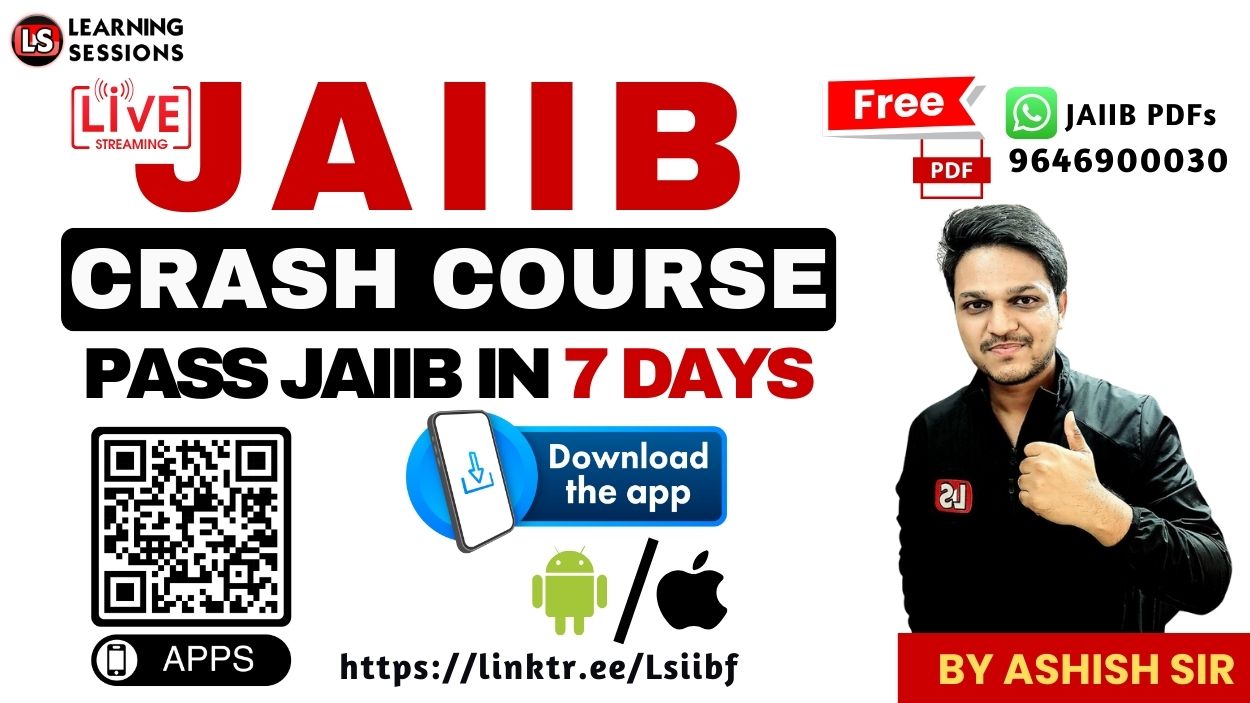Retail lending products form a crucial segment of banking operations and regulatory compliance. This article provides an in-depth understanding of norms related to retail products such as Housing Finance, Education Loan, Gold Loan, and Personal Loan. The goal is to help IIBF aspirants master these concepts from both compliance and practical perspectives.
👉 Watch Full Video
1. Housing Finance – Scope, Purposes & Eligibility
1.1 Definition & Permitted Purposes
Housing loans are extended for acquisition or construction of residential property for self-occupation or rental income. Typical purposes include purchase of new house, construction on owned land, extension, or alteration of existing dwelling.
1.2 Eligible Borrowers
Eligible borrowers include salaried individuals, self-employed professionals, joint applicants (spouses), and certain firms. Due diligence on income, title verification, approvals, and creditworthiness is mandatory.
1.3 Intermediaries and Builder Due Diligence
Banks must verify registration, approvals, and RERA compliance of builders and developers before financing. For Urban Co-operative Banks, prudential exposure norms and board-approved policies apply.
1.4 Innovative Housing Loan Products
Modern variants like flexi repayment loans, green home finance, and step-up EMIs are permitted provided risk, disclosure, and policy compliance are ensured.
1.5 Disclosure & Real Estate Exposure
Banks must disclose exposure to real estate and follow prudential limits. Regular monitoring of exposure levels and risk diversification is essential.
1.6 Priority Sector Lending (PSL) Limits
Housing loans under priority sector have defined ceilings for loan amount and property size. Accurate classification and reporting to regulators are vital.
1.7 Affordable Housing & Safety Guidelines
Financing for affordable housing must adhere to NHB and internal audit guidelines, along with NDMA’s safety and disaster management norms.
1.8 Risk Mitigation & Staff Training
Proper training on title verification, builder risk, fraud prevention, valuation process, and disbursement is crucial to ensure regulatory compliance.
2. Education Loans – Objectives, Eligibility & Norms
2.1 Objective
Education loans promote access to higher education in India and abroad, particularly for economically weaker sections.
2.2 Eligible Institutions & Courses
Loans can be provided for recognized institutions approved by regulatory bodies. Expenses covered include tuition fees, travel, hostel, and equipment costs.
2.3 Repayment Schedule & Interest
Repayment begins after the course period plus a moratorium. Transparency of interest rate type, charges, and repayment structure must be maintained.
2.4 Charges & Vidya Lakshmi Portal
Processing and documentation charges must be disclosed clearly. Applications through the Vidya Lakshmi Portal ensure transparency and central tracking.
2.5 Insurance & Margin Money
Some banks mandate insurance for the borrower to mitigate risk. Margin contribution varies based on course type and location.
2.6 Disbursement Norms
Disbursement should align with the academic calendar and institution’s fee structure. Funds must be released directly to the institution wherever possible.
3. Gold Loans – Valuation, Tenure & Security Norms
3.1 Regulatory Framework
Gold loans are governed by RBI’s master circulars on loans against security of gold jewellery or bullion. Banks must frame a clear valuation and LTV policy.
3.2 LTV & Valuation
Loan-to-value ratio (LTV) must be within regulatory limits. Gold is valued based on purity and market price; periodic revaluation is mandatory.
IIBF Compliance in Banks | Complete Guide on the Indian Financial Sector
3.3 Tenure & Repayment
Tenure generally ranges between 3 to 12 months with bullet or EMI repayment. Vault safety, insurance, and dual control are mandatory.
3.4 Risk & RBI Inspection
RBI closely monitors gold loan portfolios for deviations in LTV, collateral management, and end-use verification.
3.5 Gold Monetization & Staff Training
Banks may link gold lending with gold monetization schemes. Staff must be trained in valuation, risk control, and documentation handling.
4. Personal Loans – Purpose, Eligibility & Monitoring
4.1 Usage & Purpose
Personal loans serve personal needs such as medical, travel, or renovation. Banks must ensure funds are not used for speculative or business activities.
4.2 Credit Appraisal & Documentation
Appraisal includes credit score verification, income assessment, and debt-to-income ratio calculation. Transparent documentation of fees and conditions is essential.
4.3 Risk Mitigation & Monitoring
Since personal loans are unsecured, banks must establish strong follow-up and early-warning systems for overdue accounts.
5. Cross-Cutting Compliance Areas
5.1 Due Diligence Framework
Each retail product must adhere to comprehensive due diligence including KYC, AML checks, collateral valuation, and approval hierarchy.
5.2 Documentation & Disclosures
Banks must use standard loan agreements, security documents, and maintain updated disclosures on retail exposures.
5.3 Staff Training & Risk Culture
Continuous staff training ensures adherence to product policies, fraud prevention, and compliance culture within branches.
6. Summary Table
| Product | Purpose / Borrower | Key Compliance Focus |
|---|---|---|
| Housing Finance | Acquisition or construction of house | Title verification, builder checks, LTV, PSL classification |
| Education Loan | Higher education (India/abroad) | Course eligibility, moratorium, margin, transparent charges |
| Gold Loan | Against gold jewellery / bullion | LTV control, valuation, vault safety, risk audit |
| Personal Loan | Individual consumption needs | Credit assessment, disclosure, monitoring |
7. Call to Action
If you are preparing for the IIBF Compliance in Banks exam, enroll in my comprehensive bilingual course covering all modules with detailed sessions, mock tests, and PDF resources.
Conclusion
Understanding Retail Product Norms is essential not only for exam preparation but also for real-world compliance. Use this article along with the video and PDF to strengthen your knowledge and practical insights.
Also Like:







